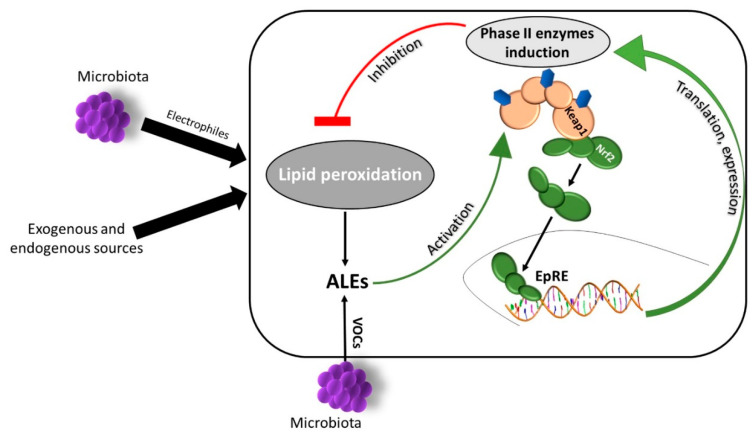Figure 2.
Cutaneous lipid peroxidation processes are modulated in a feedback based manner mediated by the Nrf2–Keap1 pathway. Physiological lipid peroxidation is naturally occurring in the skin in response to oxidative stimuli by environmental factor as well as by microbiota excretions and emanations, as well as direct interactions. Advanced lipid peroxidation end-products (ALEs are the end products of these processes but can also be contributed by resident cutaneous bacteria in the form of volatile organic compounds (VOCs). These compound can in turn activate the nuclear factor erythroid 2-related factor 2–Kelch-like ECH-associated protein 1 (Nrf2–Keap1) pathway by inducing Keap1 cysteine residues oxidation, leading to the expression of cytoprotective phase II enzymes. Then, these enzymes act in a negative feedback, inhibiting excessive lipid peroxidation, thus contributing to a healthy and balanced skin physiological redox (PR) homeostasis.

